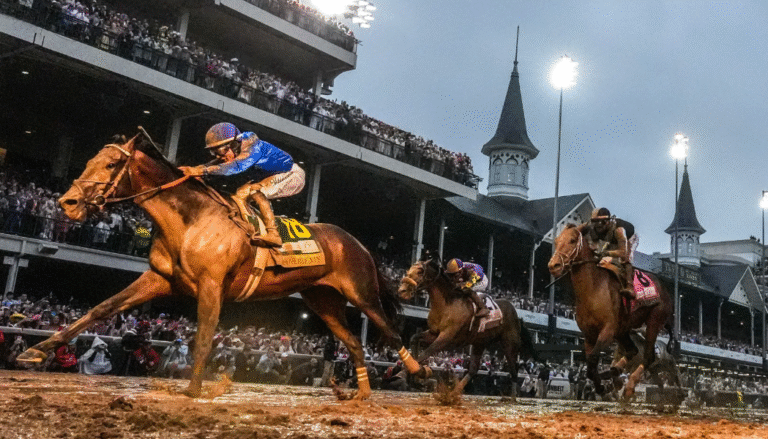Understanding the Different Types of Horse Races
Horse racing encompasses various disciplines, each with distinct characteristics and demands. Flat racing emphasizes speed on straight tracks, while harness racing showcases pacing with sulkies. Steeplechase introduces obstacles, requiring agility and strategy. Endurance racing tests the limits of stamina over long distances. These diverse types reveal the intricate skills and strategies involved in equestrian sports. Understanding these differences can enhance appreciation for the sport’s complexities and the athletes involved, but what makes each type unique?
Flat Racing
Flat racing, a prominent form of equestrian competition, takes place on level tracks devoid of obstacles, showcasing the speed and stamina of thoroughbred horses.
This exhilarating sport often features sprint distances, where horses race over shorter lengths, emphasizing raw speed and quick acceleration.
Enthusiasts appreciate the strategic elements involved, as trainers and jockeys seek to optimize performance in these thrilling contests.
See also: Understanding Horse Racing Odds: A Complete Breakdown
Harness Racing
Harness racing, a captivating variant of equestrian sport, involves horses pulling a sulky—a lightweight cart with two wheels occupied by a driver.
The success of this racing form hinges on drivers’ techniques and precise race strategies. Mastering the art of pacing and timing can elevate performance, allowing horses to showcase their speed and endurance, ultimately leading to exhilarating competition and unpredictability on the track.
Steeplechase
Steeplechase racing presents a thrilling departure from harness racing, as it combines the speed of horse racing with the challenges of navigating obstacles.
Competitors employ various jumping techniques, adapting their approach to each hurdle. Effective race strategy is paramount, as jockeys must balance speed and precision, ensuring their mounts clear obstacles while maintaining momentum.
This unique blend of skill captivates audiences, celebrating equestrian agility and endurance.
Endurance Racing
Endurance racing showcases the remarkable synergy between horse and rider over long distances, typically ranging from 50 to 100 miles.
This long distance competition tests both physical stamina and mental fortitude. Successful riders employ various strategies, such as pacing and nutrition management, to maintain their horse’s energy levels.
Ultimately, the bond formed through training and understanding enhances performance and fosters a sense of freedom in the sport.
Conclusion
In conclusion, the diverse world of horse racing captivates enthusiasts with its unique challenges and strategies. While some may argue that flat racing overshadows other disciplines, each type—be it harness racing, steeplechase, or endurance racing—offers distinct thrills and showcases the remarkable bond between horse and rider. Understanding these variations not only enhances appreciation for the sport but also highlights the skill and dedication required across all racing formats, making each event an exciting spectacle in its own right.




